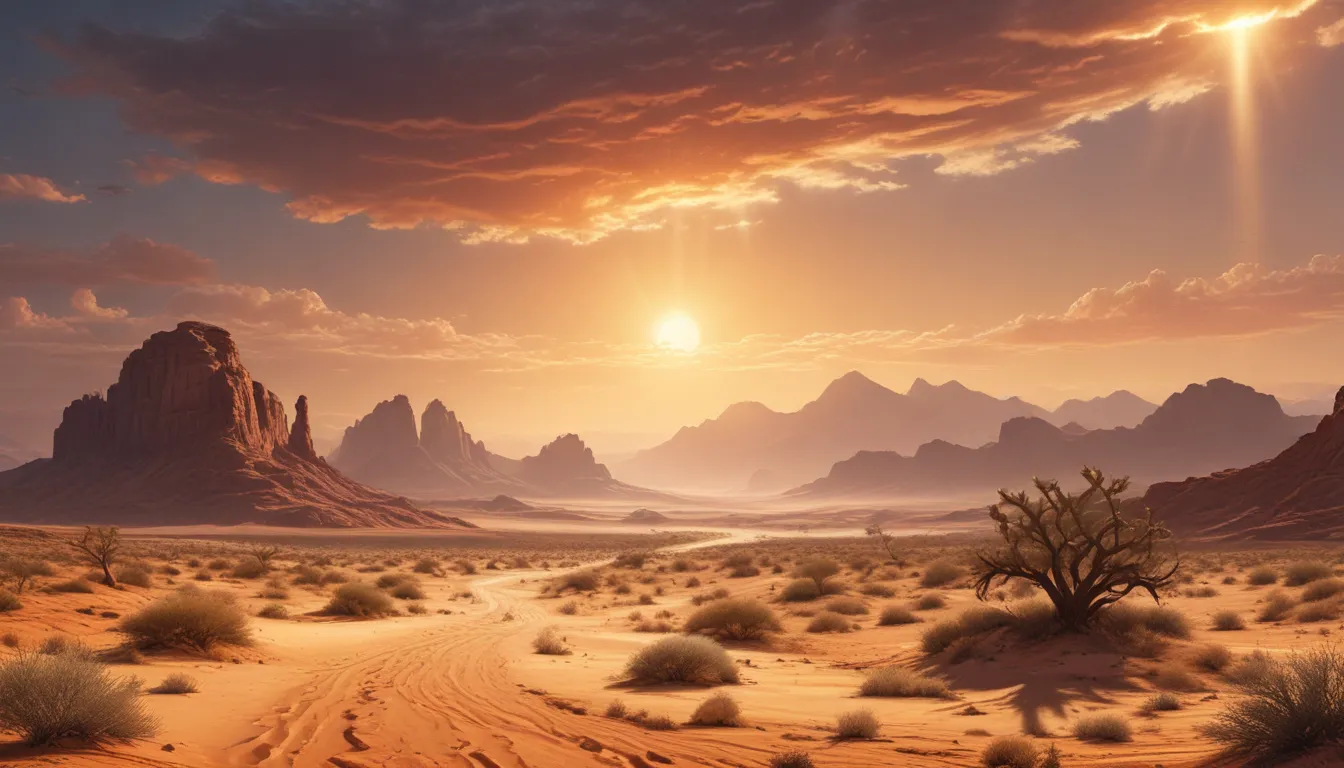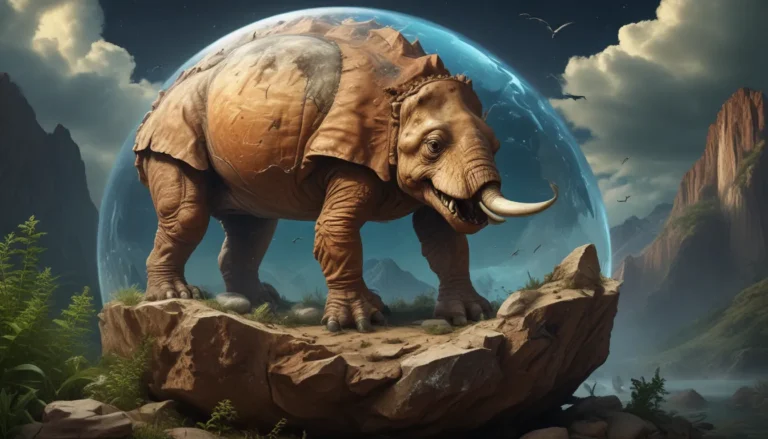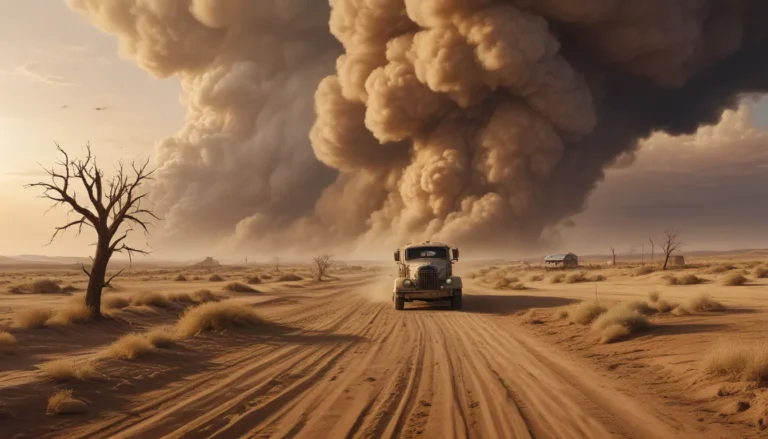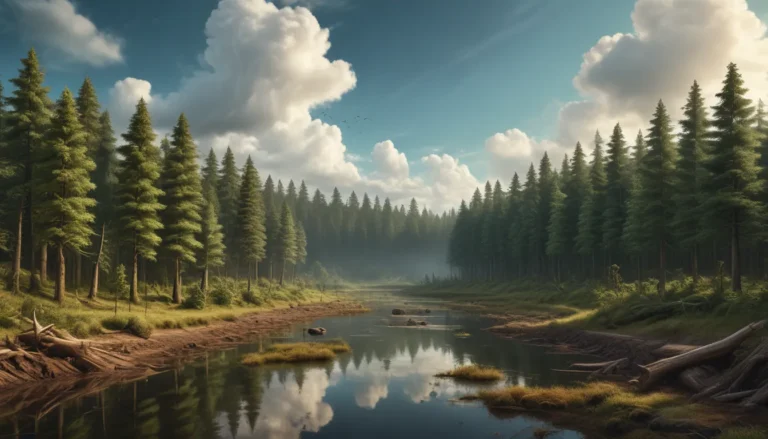A Note About Images: The images used in our articles are for illustration purposes only and may not exactly match the content. They are meant to engage readers, but the text should be relied upon for accurate information.
Deserts have long been perceived as scorching, barren wastelands devoid of life. However, hidden within this harsh ecosystem lies a unique category of deserts known as rainless deserts. These landscapes, characterized by their minimal levels of rainfall, offer a captivating glimpse into the resilience of life in extreme environments. Join us on a journey as we delve into 20 intriguing facts about rainless deserts that will leave you astounded and inspired.
Exploring the Diversity of Rainless Deserts
- Rainless deserts are not confined to the traditional image of hot, sandy landscapes; they can also be cold, icy, and harbor diverse plant and animal life, showcasing a rich tapestry of nature’s adaptability.
- Despite their challenging conditions, deserts play a vital role in regulating the global climate and provide unparalleled stargazing opportunities, underscoring their significance in our planet’s ecosystem.
Unveiling Remarkable Desert Wonders
The Sahara Desert: A Titan of Heat and Size
The Sahara Desert reigns supreme as the largest hot desert on Earth, sprawling over 9.2 million square kilometers and boasting a size comparable to that of the United States.
Atacama Desert: The Arid Champion
In Chile, the Atacama Desert stands out as the driest non-polar desert globally, receiving an average of less than 1 millimeter of rainfall per year, a testament to its arid nature.
Gobi Desert and Antarctic Desert: Embracing the Chill
Dispelling misconceptions, cold deserts like the Gobi Desert in Mongolia and the Antarctic Desert showcase freezing temperatures, challenging our preconceived notions of desert climates.
Life Thrives in Unlikely Places
Desert Flora and Fauna: Resilience and Adaptability
Contrary to expectations, deserts host a rich biodiversity, from resilient cacti and succulents to iconic animals like camels and fennec foxes, demonstrating nature’s remarkable ability to thrive in arid environments.
Namib Desert: Towering Sand Giants
The Namib Desert in Namibia boasts some of the tallest sand dunes globally, with heights exceeding 300 meters, sculpting a surreal and mesmerizing landscape over millions of years.
Antarctica: The Icy Desert Domain
Covering 14 million square kilometers, Antarctica reigns as the largest desert globally due to its limited precipitation, showcasing a frozen wilderness unlike any other.
Celestial Splendor in Desert Skies
Stargazing Oasis: Embracing the Night Sky
Deserts like the Atacama and Mojave offer unparalleled stargazing experiences, with minimal light pollution and clear skies that beckon adventurers to explore the cosmos from these pristine vantage points.
Sonoran Desert: Home of the Majestic Saguaro
The Sonoran Desert, spanning the southwestern United States and northwestern Mexico, boasts the iconic saguaro cactus with its towering, branching arms, symbolizing the unique flora of this arid landscape.
Dead Sea: Nature’s Saline Sanctuary
Nestled in the Jordan Rift Valley within the Arabian Desert, the Dead Sea’s high salt content and therapeutic properties make it a notable landmark in this desert region.
Enigmatic Deserts and Their Extremes
The Coldest Domain: Antarctica’s Arctic Antithesis
With bone-chilling average temperatures of -56°C, the Antarctic Desert earns the title of the coldest desert globally, showcasing freezing conditions in stark contrast to conventional desert landscapes.
Joshua Trees of the Mojave
Native to the Mojave Desert in the southwestern United States, the Joshua tree’s unique appearance, with spiky leaves and twisted branches, adorns this arid terrain with its distinct charm.
Insights Into Vast Desert Realms
Arabian Desert: Endless Sandscape
Encompassing swathes of Saudi Arabia, Yemen, Oman, and the United Arab Emirates, the Arabian Desert sprawls over 2.3 million square kilometers, standing as the largest continuous sand desert globally.
Temperature Extremes: Nature’s Juxtaposition
Some deserts experience dramatic temperature fluctuations, with scorching daytime highs exceeding 40°C plunging to near freezing levels after sunset, illustrating the dynamic nature of desert climates.
The Taklamakan Myth: Sea of Death
Infamous for its treacherous shifting sand dunes, China’s Taklamakan Desert earns the foreboding moniker “Sea of Death,” highlighting the challenges of navigating this sandy expanse.
Unveiling Australia’s Desert Jewel
Great Sandy Desert: A Landscape Uncharted
The Great Sandy Desert in Western Australia spans nearly 285,000 square kilometers, presenting a vast and remote wilderness awaiting discovery in this rugged desert expanse.
Kalahari Desert: Nature’s Contradiction
Despite its desert classification, the Kalahari receives more rainfall compared to other deserts, fostering a diverse array of wildlife and bucking the trend of arid landscapes.
Sandstorms: Nature’s Dramatic Display
In desert regions, sandstorms are a common occurrence, fueled by the dry, loose nature of desert sands, creating awe-inspiring yet potentially hazardous conditions in these arid environs.
Human Encounters in Desolate Lands
The Thar Desert: Crowning Glory
Stretching across India and Pakistan, the Thar Desert, known as the “Great Indian Desert,” is home to over 83 million people, showcasing humanity’s resilience in adapting to harsh desert conditions.
Danakil Depression: Nature’s Furnace
In Ethiopia, the Danakil Depression emerges as one of the planet’s hottest locales, with scorching temperatures and surreal landscapes painting a picture of unparalleled desolation and beauty.
Guardians of Global Climate
Desert Climate Regulators: Earth’s Balancing Act
Deserts play a pivotal role in shaping global climate patterns, influencing atmospheric circulation and precipitation distribution, underscoring their indispensable contribution to Earth’s climate regulation.
As we unravel the mysteries and marvels of rainless deserts, we gain a newfound appreciation for the rugged beauty and astounding biodiversity that thrive in these seemingly inhospitable landscapes. Whether you are an aspiring explorer, a nature enthusiast, or a curious observer, the allure of rainless deserts beckons you to embark on a journey of discovery. Let the enchanting secrets of these barren lands ignite your sense of wonder and curiosity, guiding you to appreciate the captivating world of rainless deserts in all its splendor.
FAQs: Your Desert Queries Answered
-
Why do rainless deserts exist?
Rainless deserts owe their existence to unique geographical and atmospheric conditions, with dry air masses descending in latitudes where precipitation is scarce. Additionally, rainless deserts often reside in rain shadows, where mountains block moisture, perpetuating arid conditions. -
How do plants and animals survive in rainless deserts?
Plants and animals in rainless deserts showcase remarkable adaptations to endure extreme aridity. Some plants develop extensive root systems to access underground water sources, while others store water in their tissues. Desert animals exhibit specialized physiological and behavioral adaptations to conserve water and withstand high temperatures. -
Are all rainless deserts hot?
Contrary to popular belief, not all rainless deserts boast scorching temperatures. Cold deserts, such as the Gobi Desert and Patagonian Desert, experience freezing conditions, broadening our understanding of desert climates beyond heat. -
Can anything grow in rainless deserts?
Despite the challenging conditions, select plant species thrive in rainless deserts, thanks to specialized features like water-storing tissues, deep roots, or rapid life cycle completion during rare rainy spells. However, vegetation density remains relatively low compared to more hospitable ecosystems. -
Are there human settlements in rainless deserts?
Indeed, human settlements dot the landscapes of rainless deserts, with inhabitants adapting to harsh conditions through efficient water management, underground dwellings, and nomadic lifestyles. From the Bedouins in the Sahara to indigenous groups in the Sonoran Desert, humanity’s resilience shines in these unforgiving terrains.
Your Journey to Desert Discoveries
Our commitment to delivering credible and captivating content fuels our pledge to provide engaging insights and trustworthy information. Each fact shared with you stems from the contributions of real users, ensuring a diverse and authentic reservoir of knowledge. Upholding the highest standards of accuracy and reliability, our dedicated editors meticulously scrutinize each submission, guaranteeing that the facts you encounter are not just enthralling but also verifiable. Trust in our dedication to quality and authenticity as you immerse yourself in the wonders of rainless deserts and unravel the enigmatic tales woven within these arid landscapes.






